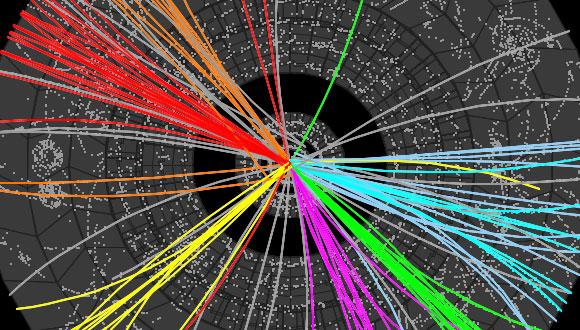Nuclear Physics Joint Seminar
PROGRAM
14:30 - 14:45 Refreshments
14:45 - 15:45 "Exotic Hadrons with Heavy Quarks", Marek Karliner, Tel Aviv university
15:45 - 16:15 Coffee break
16:15 - 17:15 "Probing repulsive core of the nucleon-nucleon interaction via the 4He(e; epN) triple-coincidence reaction", Igor Korover, Tel Aviv University
Abstract First talk (Karliner)
During the last three years strong experimental evidence from B and charm factories has been accumulating for the existence of exotic hadronic quarkonia, narrow resonances which cannot be made from a quark and an antiquark. Their masses and decay modes show that they contain a heavy quark-antiquark pair, but their quantum numbers are such that they must also contain a light quark-antiquark pair. The main theoretical challenge has been to determine the nature of these resonances. The main possibilities are that they are either "genuine tetraquarks", i.e. two quarks and two antiquarks within one confinement volume, or "hadronic molecules" of two heavy-light mesons.
In the last few months there is more and more evidence in favor of the latter. I will discuss the experimental data and its interpretation and will provide fairly precise predictions for masses and quantum numbers of the additional exotic states which are naturally expected in the molecular picture but have yet to be observed. I will also provide arguments in favor of the existence of an even more exotic state - a hypothetical deuteron-like bound state of two heavy baryons.
Abstract - Second talk (Korover)
We studied simultaneously the 4He(e,e'p), 4He(e,e'pp) and 4He(e,e'pn) reactions at large momentum transfer, large missing momentum, and Bjorken X>1. The knocked-out proton was detected in coincidence with a proton or neutron recoiling almost back to back to the missing momentum leaving the residual A=2 system at low excitation energy. The measurement cover the region where the nucleon-nucleon (NN) force is expected to change from predominantly tensor to repulsive (most probably scalar).
Our data are compared with calculations of two-nucleon momentum distributions in 4He and discussed in the context of probing the elusive repulsive NN force.
Please consult also the seminar web page at: www-nuclear.tau.ac.il/joint


